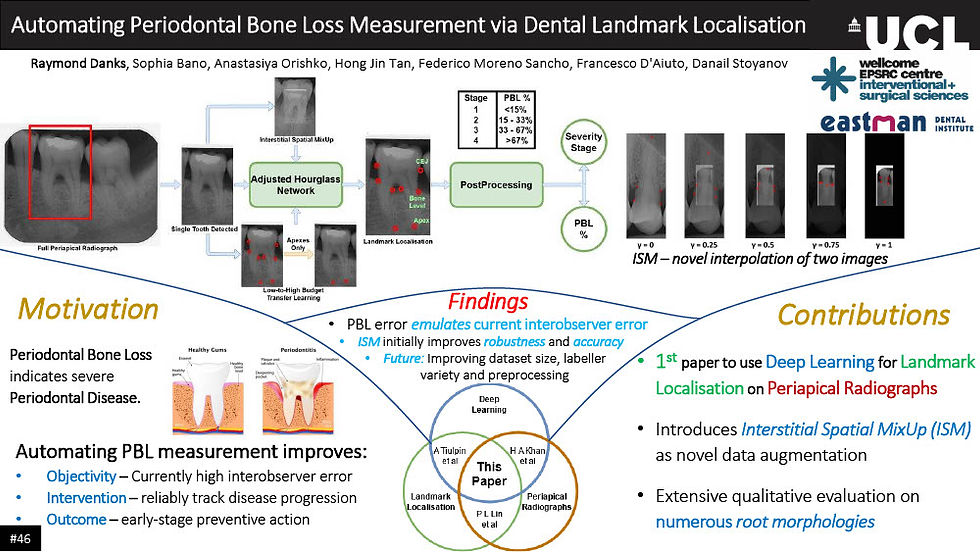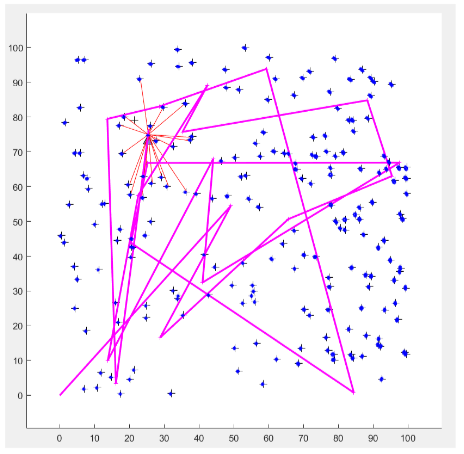IJCARs & IPCAI 2021 - Automating Periodontal Bone Loss Measurement via Dental Landmark Localisation
- Raymond Danks
- Dec 30, 2021
- 2 min read
This blog post is not intended to be an exhaustive description of this project, but more of a central place to record all resources and record the experience. See the attached resources for more info!
Poster Slide:

Conference Presentation:
Alternative video link from official IPCAI 2021 Youtube Channel: https://youtu.be/_vjpY9BN4pA
Paper Publication:
Periodontal Bone Loss (PBL) is a symptom of periodontal disease. This is an extremely prevalent disease worldwide (see paper for further details). PBL occurs when the bacteria from the disease degrades which holds the tooth in place. It is important to accurately measure the level of PBL, in order to determine how severe the periodontal disease is. This is often done using radiographs of the tooth.
Clinically, this is recommended to be done via assessing numerous landmarks (bone-tooth intersection etc), however in practice this is very time-consuming, so often clinicians estimate this visually, leading to large disparities and inaccurate tracking of disease progression.
There has been attempts to use CNNs to analyse PBL before, but they had typically used an approach whereby a CNN solely tries to estimate the generic PBL range (or its existence) using the whole radiograph (and no more information - a generic classification problem).
As an alternative, I decided that since the recommended clinical method was to use landmarks, I would use CNNs to localise landmarks on the radiographs and subsequently calculate the PBL. Along the way, I coined a new data augmentation, known as Interstitial Spatial MixUp (ISM), which improved performance.
My paper got published in IJCARS and IPCAI 2021. As first author, my responsibility was to write the bulk of the paper (whilst collaborating with Sophia Bano and Anastasiya Orishko), whilst keeping the other authors in the loop and having them read and approve reviews and updates. Subsequent to this, it was my responsibility to respond to the 3 rounds of peer review. Once my paper had been accepted, I had to create the poster shown above, as well as create and perform a presentation for IPCAI, which was done remotely. During the conference, I joined the stage for a live Q&A and description of my paper.
Overall, whilst this was a taxing experience (the entire process taking ~6 months, which I did in my spare time alongside my full-time job), it was 100% worthwhile. Having knowledgeable and critical reviewers look at your work, ask very valid questions and being able to come back and prove (whether through rebuttal or a change of experiment)that your results are novel and valid, is a really amazing feeling.




Comments